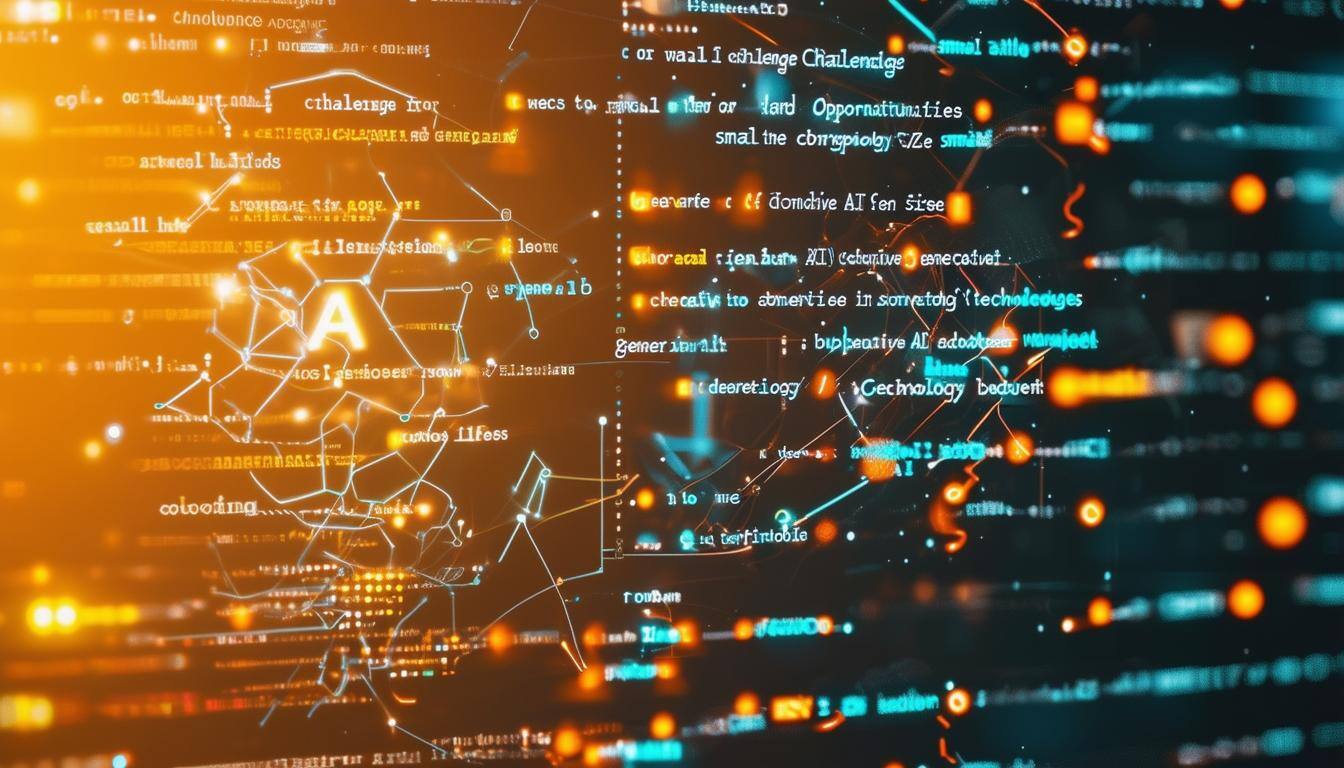Agentic AI vs. AI Agents: Unraveling the Confusion
The world of Artificial Intelligence (AI) is constantly evolving, with new terms and concepts emerging at a rapid pace. This rapid evolution has led to some confusion among people regarding the distinction between "Agentic AI" and "AI agents." To understand this distinction, it's helpful to consider the historical context. AI has progressed through three distinct waves: the first wave, starting in the 1940s, focused on foundational research and rule-based systems; the second wave, marked by the rise of Generative AI (GenAI) in 2022, brought about powerful language models and creative content generation; and now, the third wave, Agentic AI, is emerging, characterized by autonomous action-taking agents. This article aims to clarify the difference between Agentic AI and AI agents within this evolutionary framework, exploring their capabilities, limitations, and potential impact on society.
Defining Agentic AI
Agentic AI, also known as AI agents, refers to a class of AI systems designed to operate autonomously and achieve goals with minimal human intervention. These systems combine automation with the creative abilities of a large language model (LLM). They can:
- Understand context and instructions: They can interpret complex information and user requests, often in natural language.
- Set goals and plan workflows: Based on their understanding, they can establish objectives and devise strategies to achieve them.
- Make decisions and take actions: They can analyze situations, weigh options, and execute actions to fulfill their goals.
- Adapt to changing circumstances: They can learn from their experiences and adjust their behavior accordingly.
Essentially, Agentic AI aims to emulate human-like agency, enabling AI systems to act independently and proactively in complex environments.
Defining AI Agents
AI agents are software programs that can be assigned tasks, examine their environments, take actions as prescribed by their roles, and adjust based on their experiences. They are designed to perform specific tasks on behalf of a user or another system. They can:
- Interact with their environment: They can perceive and gather information from their surroundings, often through sensors or data streams.
- Make decisions: Based on the information they gather, they can make informed choices to achieve their assigned tasks.
- Take actions: They can execute actions in their environment to complete their tasks.
- Learn and adapt: Some AI agents can learn from their experiences and improve their performance over time.
AI agents are typically designed for specific purposes, such as customer service, scheduling, or data analysis. They can automate processes, improve efficiency, and enhance decision-making.
Distinguishing Agentic AI from AI Agents
While the terms are closely related, there is a key distinction:
- Agentic AI is the overarching concept of AI systems capable of independent action and goal achievement. It refers to the specific purpose or application of AI agents.
- AI agents are the individual components within this system that perform specific tasks.
Think of it this way: Agentic AI is the framework or platform that enables AI agents to function autonomously. AI agents are the individual workers within that framework, each with a specific role to play.
Furthermore, while traditional LLMs have limitations in knowledge and reasoning, agentic technology uses tool calling to overcome these limitations. This means that Agentic AI can access and utilize external tools and data sources to enhance its capabilities and make more informed decisions.
Another key difference is that AI agents are reactive and goal-specific, while Agentic AI is proactive and capable of independent decision-making. AI agents typically respond to specific inputs or instructions, whereas Agentic AI can anticipate needs, identify opportunities, and take initiative without explicit human direction.
Illustrative Examples
To further clarify the difference, let's consider some examples:
Agentic AI:
- An AI system that manages a marketing campaign, continuously monitoring performance, adjusting strategies, and optimizing results based on feedback without human intervention.
- An AI system in healthcare that monitors patient data, adjusts treatment recommendations based on new test results, and provides real-time feedback to clinicians.
AI Agents:
- A chatbot that answers customer questions, resolves issues, and provides support 24/7.
- A scheduling assistant that automatically books appointments based on availability and preferences.
- AI agents can be used for various real-world healthcare applications, such as monitoring patient vitals, providing personalized treatment plans, and assisting with diagnoses. Multi-agent systems can be particularly useful for problem-solving in such settings.
- In emergency response situations, AI agents can use deep learning algorithms to analyze social media data and identify individuals who need rescue.
Capabilities and Limitations
Both Agentic AI and AI agents have their own sets of capabilities and limitations:
Agentic AI:
|
Capabilities |
Limitations |
|---|---|
|
Autonomy: Can operate independently with minimal human intervention. |
Unforeseen Consequences: Due to their adaptability, they may engage in unforeseen actions or decisions, leading to unintended consequences. |
|
Adaptability: Can learn from experiences and adjust behavior accordingly. |
Limited Understanding of Internal Workings: The complex decision-making processes can be opaque, making it difficult to identify the root cause of errors. |
|
Goal Orientation: Can set goals and plan workflows to achieve them. |
Transparency in Data Usage: Concerns exist regarding potential misuse of user data and the need for transparent practices. |
|
Enhanced Customer Experiences: Can provide personalized and responsive experiences at scale. |
Misaligned Objectives: If objectives are not properly aligned, AI-driven decisions may not reflect user preferences or goals. |
|
Strategic Human-AI Collaboration: Can enhance human performance, productivity, and engagement. |
Data and Goal Drift: AI agents may generate erroneous outputs if not sufficiently trained, and their goals may shift as they learn, leading to misalignment. |
|
Efficiency and Productivity: Can automate workflows and deliver on-demand support. |
Context Management: Agents may struggle to maintain context in extended interactions or tasks due to memory limitations. |
|
Enhanced Support Operations: Can handle repetitive tasks like password resets and information lookups. |
Prompt Engineering: Poorly structured prompts can lead to ambiguous or incorrect responses, and managing prompt changes can be challenging. |
|
Understanding Complex Contexts: Can understand and interpret complex information and goals. |
Bias and Fairness: AI agents may inherit biases from their training data, leading to unfair or discriminatory outcomes. |
|
Reasoning and Decision-Making: Can make judgment calls and weigh trade-offs. |
Explainability: The lack of transparency in decision-making processes can hinder trust and accountability. |
|
Adaptable Planning: Can adjust plans based on changing conditions. |
Data Privacy and Security: The vast amount of data processed by AI agents raises concerns about data privacy and security breaches. |
|
Language Understanding: Can understand and respond to natural language instructions. |
|
|
Workflow Optimization: Can optimize workflows and processes. |
|
|
Reviewing and Understanding Instructions: Can review and understand complex instructions. |
|
|
Developing Multi-Step Action Plans: Can develop multi-step action plans with subtasks. |
|
|
Goal Setting: Can set goals and adapt to achieve them. |
|
|
Real-Time Information Retrieval: Can search the web, access APIs, and query databases for real-time information. |
|
|
Task Initiation and Management: Can initiate and manage tasks such as data logging and monitoring. |
|
|
Data Collection and Analysis: Can proactively track and collect data streams from various sources. |
|
|
Feedback Loops: Can use feedback loops to refine models and decision-making processes. |
AI Agents:
|
Capabilities |
Limitations |
|---|---|
|
Automation of Repetitive Tasks: Can perform multiple steps autonomously, such as monitoring resources and summarizing reports. |
Unpredictable Behavior: Due to their complexity, even creators may not fully understand their decision-making, leading to unintended outcomes. |
|
Real-Time Decision-Making: Can access large amounts of data to make informed decisions in real time. |
Reliability Issues: Generative AI agents may not be reliable enough for mission-critical tasks due to hallucinations and inconsistencies. |
|
Contextual Query Handling: Can respond to contextual queries using semantic or tagged data. |
Data Scarcity and Quality: AI agents require vast amounts of high-quality data, which may be limited or biased in certain fields. |
|
Data Processing: Can use structured and unstructured data to enhance intelligence and comprehension. |
Overfitting: Agents may overfit to training data, performing poorly on unseen data. |
|
Increased Productivity and Efficiency: Can work continuously without breaks, reducing the need for human intervention. |
Auditability and Compliance: The opaque decision-making processes of AI agents can pose challenges for auditors. |
|
Goal Achievement: Can perceive their environment, make decisions, and take actions to achieve goals. |
Failure Cascades: An error in one agent can trigger a cascade of failures in interconnected systems. |
|
Task Delegation: Can handle repetitive tasks, allowing humans to focus on more complex activities. |
|
|
Perception and Data Collection: Can gather data from various sources, including customer interactions and transaction histories. |
Potential Impact
Both Agentic AI and AI agents have the potential to significantly impact various aspects of society and industry:
Agentic AI:
- Transforming Professions: Agentic AI is set to redefine roles across various sectors by automating routine tasks, enhancing creativity, and enabling employees to focus on higher-value activities.
- Economic Impact: Increased efficiency and productivity are expected, but potential job displacement and the need for new skill sets are also concerns.
- Improved Decision-Making: Agentic AI can quickly analyze complex datasets, identify patterns, and take action, leading to enhanced decision-making processes across industries.
- Enhanced Customer Experience: Agentic AI can provide personalized, real-time support and automate routine tasks, leading to improved customer satisfaction.
- Improved Security: Agentic AI can help predict and proactively address security threats, enhancing security measures within organizations.
AI Agents:
- Increased Productivity and Efficiency: AI agents can work continuously, reducing the need for human intervention and allowing employees to focus on more complex tasks.
- Job Transformation: As agents take on more tasks, roles across industries are evolving.
- Economic Impact: Increased efficiency and productivity are expected, but potential job displacement and the need for new skill sets are also concerns.
- Closing Skills Gaps: AI agents can help address talent scarcity and close skills gaps in various industries.
- Empowering Human Potential: AI agents can assist with routine tasks, freeing individuals to focus on creativity and higher-value jobs.
Conclusion
While the terms "Agentic AI" and "AI agents" are often used interchangeably, there is a subtle yet important distinction between them. Agentic AI represents the broader concept of autonomous AI systems, while AI agents are the individual components that perform specific tasks within that framework. Both have the potential to revolutionize various aspects of our lives, from automating mundane tasks to enhancing decision-making and driving innovation. As these technologies continue to evolve, it's crucial to understand their capabilities, limitations, and potential impact to harness their benefits responsibly and ethically.
 By
By


